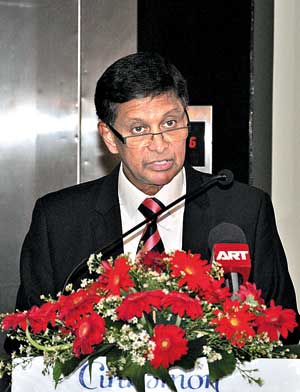06 Oct 2015 - {{hitsCtrl.values.hits}}
 Ladies and gentlemen, welcome to the 24th Annual General Meeting (AGM) of the Industrial Association of Sri Lanka (IASL). The membership of the IASL comprises of 70 plus members representing a diversity of industries large and not so large, extending from glass to electronics to energy and to the fast-moving consumer goods (FMCG) industry. Therefore, the issues and challenges faced by the membership are both unique and specific to an industry, but some are also common to all industries.
Ladies and gentlemen, welcome to the 24th Annual General Meeting (AGM) of the Industrial Association of Sri Lanka (IASL). The membership of the IASL comprises of 70 plus members representing a diversity of industries large and not so large, extending from glass to electronics to energy and to the fast-moving consumer goods (FMCG) industry. Therefore, the issues and challenges faced by the membership are both unique and specific to an industry, but some are also common to all industries.
24 Nov 2024 9 hours ago
24 Nov 2024 24 Nov 2024
24 Nov 2024 24 Nov 2024
24 Nov 2024 24 Nov 2024